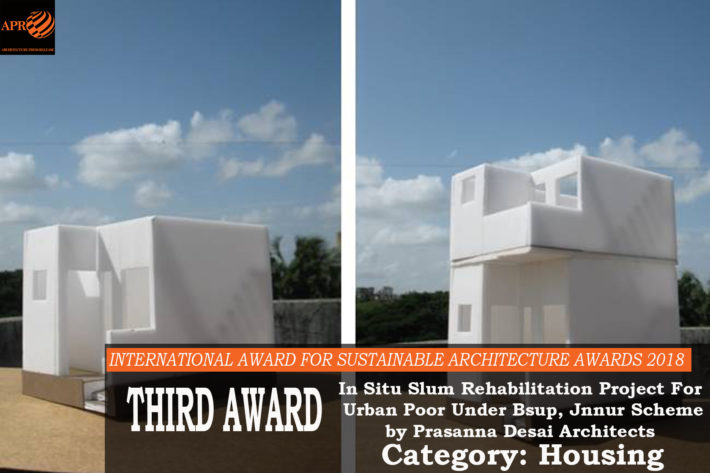The Government of India, has initiated a housing scheme, BSUP (Basic Services for the Urban Poor) under JNNURM (Jawaharlal Nehru National Urban Renewal Mission),to find housing & slum development strategies for 1,200 households, Through the efforts and vision, the long term goal of the Pune Municipal Corporation is to achieve a “Sustainable slum less city”. A sustained process of housing improvement is only possible with the beneficiary community’s contribution, participation and consent.
International Award for Sustainable Architecture Awards 2018
Third Award | Category: Housing
Architects: Prasanna Desai
Studio Name: Prasanna Desai Architects
Team Members: In Collaboration With Sparc & Mahila Milan,Ar. Mahesh Thakur, Ar. Reshma Netke, Ar. Anuja Chawda, Ar. Nitin Markad, Ar. Vaibhav Abhang, Neha Gugari, Ar. Asavari Shinde, Ar. Vedang Bhagave, Ar. Aditi Joshi
Country: India

Involved Parties – Government, Dessign Team, NGO, Beneficiaries, Local Representatives.
The effort has been to retain the overall fabric of the slum in terms of existing street patterns and existing footprints of houses. To accommodate the 270 sq ft, the Architect has proposed two types of designs:
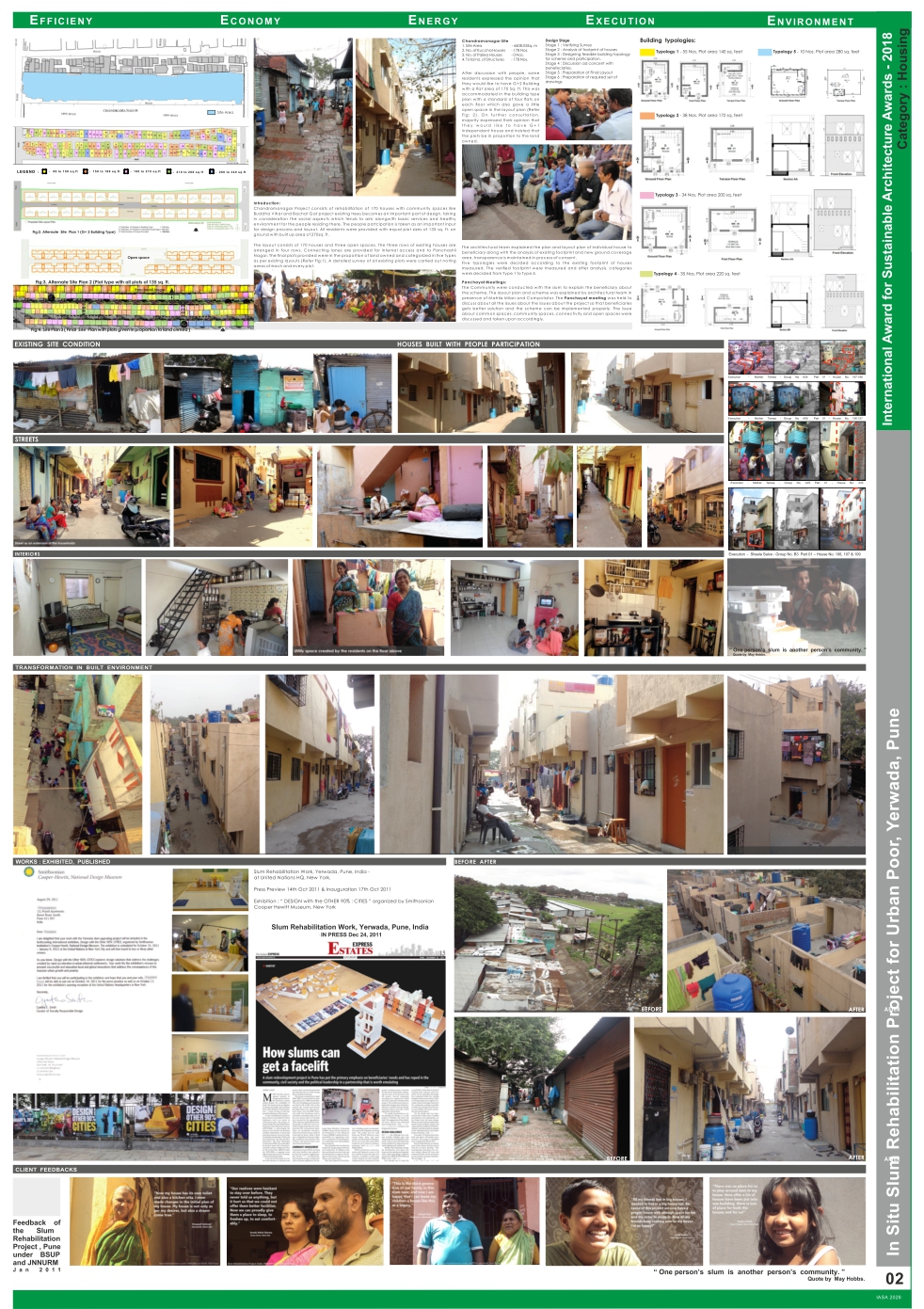
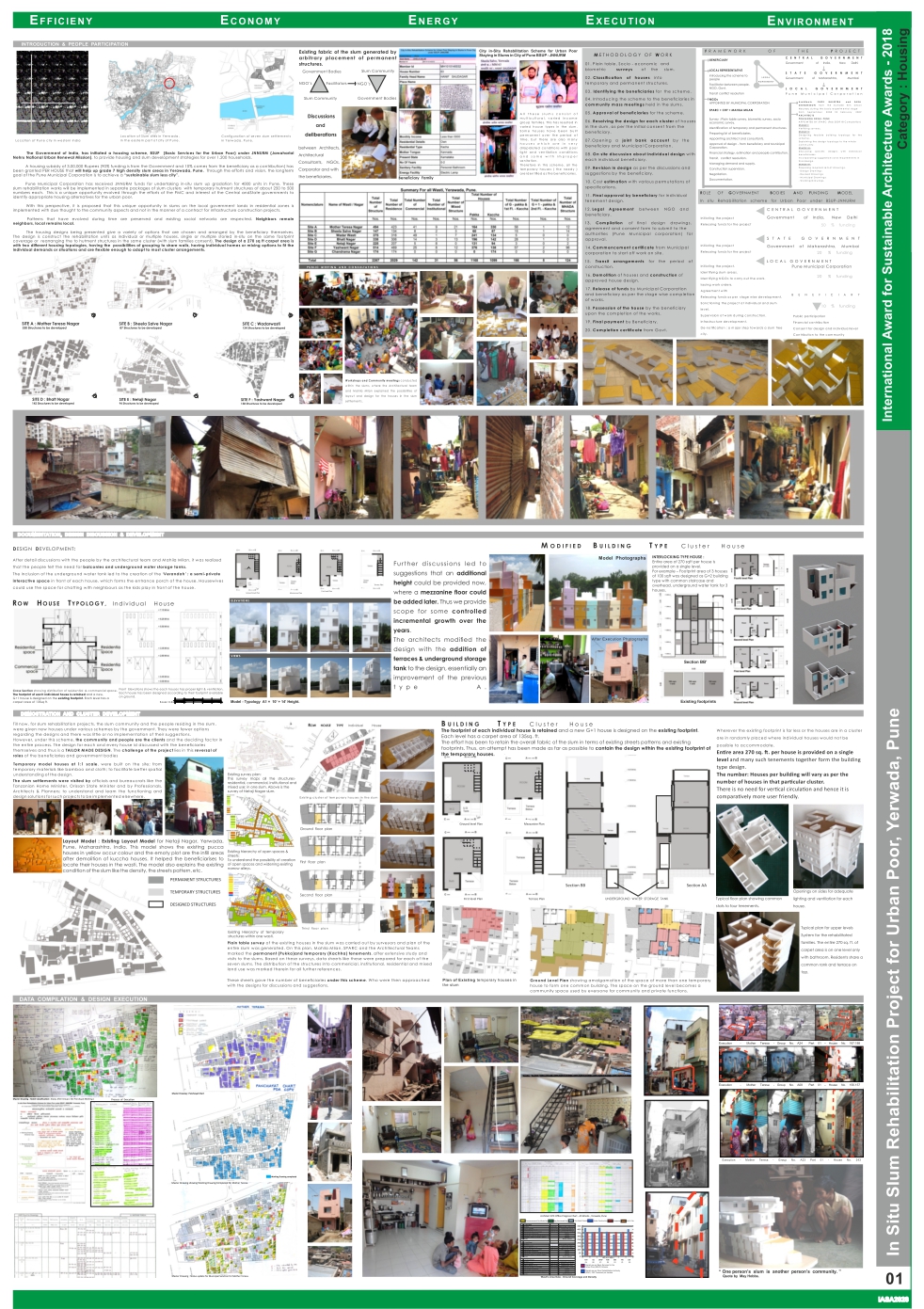

- Individual house ( A type ) – where the footprint of each individual house is retained and a new house (G+1) is designed on the existing footprint with 135 sq ft carpet area on each level.
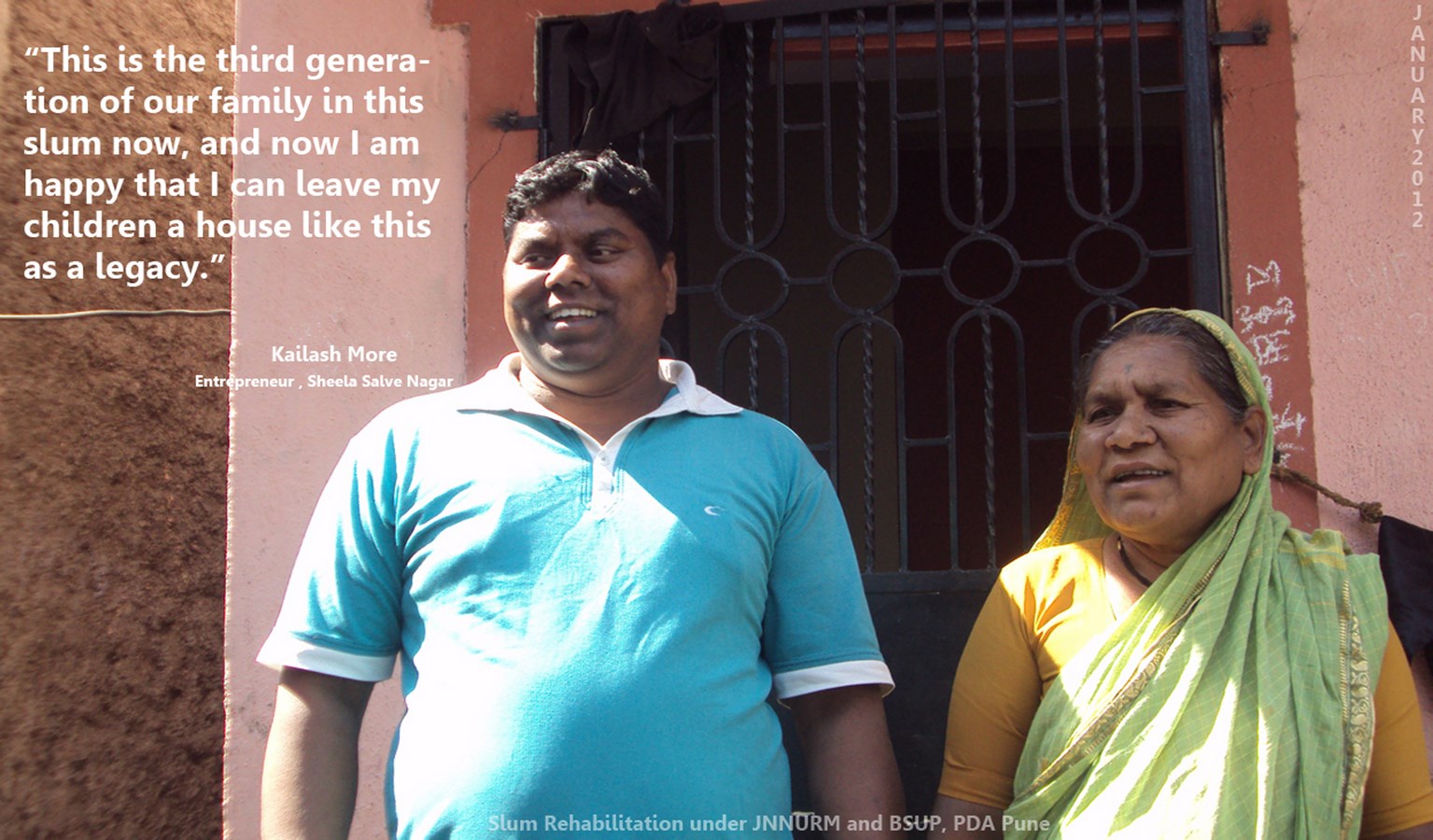
- Cluster house ( B Type ) – wherever the existing footprint is too less or the houses in a cluster are in random development where individual houses would not be possible to accommodate. Entire area of 270 sqft per house is provided on a single level.

The salient features of the designs include creating better sanitation, lighting and ventilation conditions; at individual dwelling unit level as well as at the overall settlement level and thus better living conditions which will result in the overall up gradation of the slum.

Learning from the Project: To discuss with the beneficiaries about the design of their individual house, the design of their cluster of houses, to understand their needs, problems and psyche are all a part of the process. This process took us beyond the office workspace and into the narrow lanes of the slum, where a beneficiary would desperately try and explain us his attachment to that square inch of his plot, which probably was missed out in the architectural drawing. To understand such concerns as attachment and possessiveness of land at the grass root level was a rich experience.
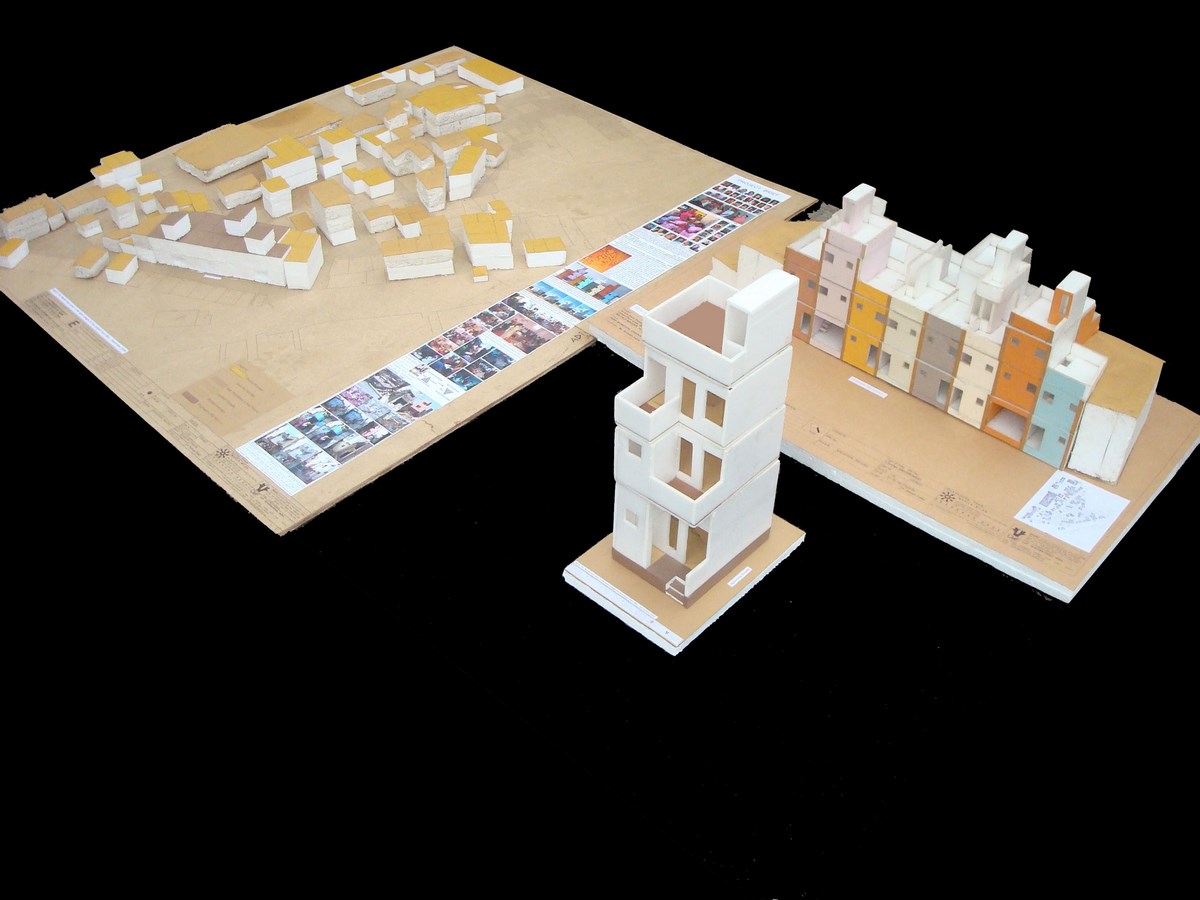
Another great opportunity. APR’s next award Urban Design & Architecture Design Awards 2018 is open for Registration.


